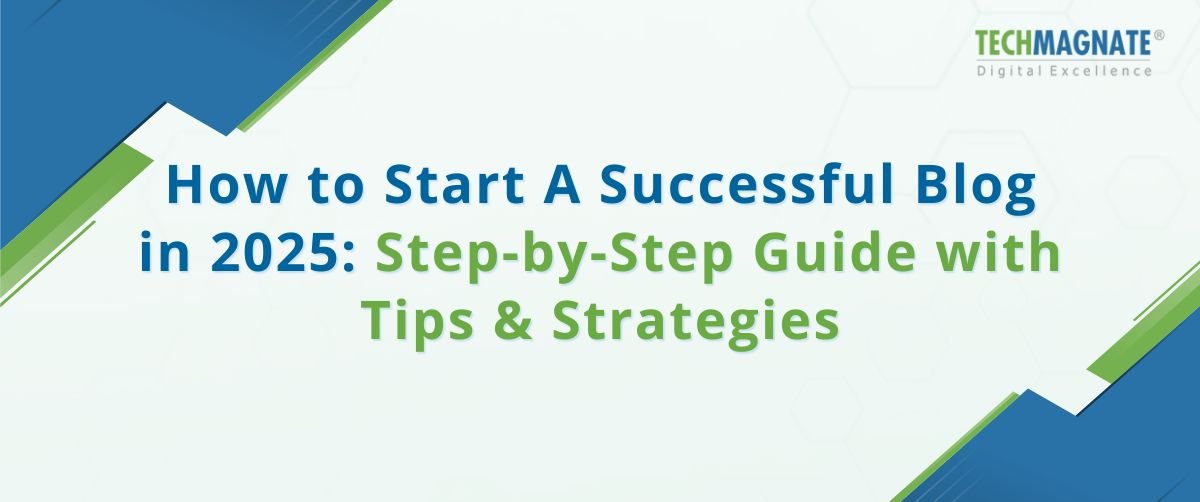
How to Start and Grow a Successful Blog in 2025: Tips & Tools
Starting and growing a successful blog in 2025 requires more than just writing engaging content. With the rise of social media, SEO advancements, and new blogging tools, creating a blog that stands out has become more complex but also more rewarding. This article outlines actionable tips and highlights essential tools to help you launch and grow a successful blog in 2025.
1. Choose a Profitable Niche
The first step in starting a blog is selecting a niche that not only excites you but also has the potential to attract a broad audience and generate revenue. In 2025, niche blogs remain popular, but it’s crucial to find a specific focus within a larger topic that sets you apart from the competition.
Tips for Finding Your Niche:
-
Identify Your Passion: Choose a subject you’re passionate about, whether it’s personal finance, health, travel, or technology.
-
Research Demand: Use tools like Google Trends and Keyword Planner to check the search volume for topics in your chosen niche.
-
Ensure Profit Potential: Consider whether your niche can be monetized through affiliate marketing, sponsored content, or selling products.
2. Pick the Right Blogging Platform
The blogging platform you choose will impact the ease of managing your site, customizing designs, and optimizing for SEO. In 2025, WordPress remains the top choice for serious bloggers due to its versatility and strong SEO capabilities. However, if you’re looking for a simpler setup, Wix or Squarespace may be better options for beginners.
Popular Platforms:
-
WordPress: Ideal for full customization, scalability, and SEO optimization.
-
Wix: Great for beginners who want drag-and-drop ease and aesthetically pleasing templates.
-
Squarespace: Offers visually stunning templates and is easy to use, making it perfect for creative blogs.
3. Create High-Quality, SEO-Optimized Content
Content remains king in blogging, but in 2025, producing SEO-optimized content is crucial to getting noticed. Quality content that is both informative and optimized for search engines can significantly increase organic traffic to your blog.
SEO Tips for Blog Content:
-
Keyword Research: Use tools like SEMrush, Ahrefs, or Ubersuggest to find high-ranking keywords related to your niche.
-
Engaging Titles: Craft compelling, keyword-rich titles that entice users to click. Consider using Headline Analyzer tools to improve title performance.
-
Optimize Content for Featured Snippets: Aim to answer common questions clearly in your blog posts to increase your chances of ranking in featured snippets on Google.
-
Use Internal & External Links: Link to your own posts to keep readers engaged and link to high-authority external sources to improve your page’s credibility.
4. Design Your Blog for User Experience (UX)
In 2025, your blog’s design should provide an easy and pleasant experience for visitors. A clean, organized, and responsive design not only helps keep visitors on your site but also boosts SEO rankings.
Key Design Elements:
-
Mobile-Friendly: Ensure your website looks great on all devices, as a significant portion of web traffic comes from mobile.
-
Fast Loading Speed: Use tools like Google PageSpeed Insights to test your website’s loading time. Aim for a loading time of under three seconds to reduce bounce rates.
-
Clear Navigation: Make sure users can easily find what they’re looking for by organizing your content into categories and providing a well-structured menu.
5. Leverage Social Media to Promote Your Blog
Social media plays a key role in growing your blog’s traffic and audience. In 2025, platforms like Instagram, TikTok, and Pinterest are essential tools for sharing your blog posts and connecting with your target audience.
Social Media Strategies:
-
Consistency is Key: Post regularly and use scheduling tools like Buffer or Hootsuite to plan your content.
-
Use Hashtags: On platforms like Instagram and TikTok, using relevant hashtags helps increase your post’s reach.
-
Engage with Your Audience: Respond to comments, host giveaways, or create polls to keep your audience engaged and involved.
6. Build an Email List for Long-Term Growth
An email list is one of the most valuable assets for your blog. By building a list of subscribers, you can directly reach your audience and nurture a loyal following. In 2025, email marketing tools have evolved, offering advanced segmentation and automation features to help you personalize your communication.
Email Marketing Tips:
-
Offer a Lead Magnet: Provide a free eBook, checklist, or exclusive content in exchange for visitors’ email addresses.
-
Email Automation: Use tools like ConvertKit, Mailchimp, or ActiveCampaign to send automated emails to subscribers based on their actions, such as abandoning a cart or downloading a resource.
-
Personalization: Use personalized subject lines and content to increase open rates and engagement with your email campaigns.
7. Monetize Your Blog
Once you have a steady stream of traffic, it’s time to start monetizing your blog. In 2025, there are numerous ways to generate revenue from blogging, from affiliate marketing to selling your own products or services.
Monetization Strategies:
-
Affiliate Marketing: Join affiliate programs like Amazon Associates, ShareASale, or Rakuten to promote products related to your niche and earn commissions.
-
Sponsored Posts: Partner with brands in your niche to write sponsored content or product reviews.
-
Digital Products: Sell eBooks, courses, or printables directly from your blog using platforms like Shopify or WooCommerce.
-
Display Ads: Use ad networks like Google AdSense or MediaVine to display ads on your site and earn passive income.
8. Engage with Your Audience for Long-Term Success
Building a successful blog is not just about creating great content; it’s also about creating a community. Engage with your audience by responding to comments, asking for feedback, and creating content that resonates with them.
Engagement Tips:
-
Host Webinars or Live Q&A: Engage directly with your audience by offering valuable webinars, tutorials, or live sessions where you answer questions or discuss topics in depth.
-
Create a Community: Start a Facebook group, Slack channel, or Discord server where your readers can connect, share ideas, and discuss topics.
-
Use Polls and Surveys: Regularly ask your readers for feedback on what they want to see next on your blog. This helps you stay aligned with your audience’s interests.
9. Track Your Progress and Improve
Use analytics tools to monitor your blog’s performance and identify areas for improvement. Tools like Google Analytics and Search Console provide detailed insights into your website’s traffic, user behavior, and SEO performance.
Tracking and Optimization Tips:
-
Monitor Traffic Sources: Understand where your visitors are coming from (organic search, social media, direct visits) to optimize your marketing efforts.
-
Measure Conversion Rates: Track how many visitors are completing actions on your site, such as signing up for your newsletter or making a purchase.
-
A/B Testing: Test different headlines, CTAs, and layouts to see what resonates best with your audience and improves conversion rates.
Conclusion: Build a Blog that Lasts
Starting and growing a successful blog in 2025 requires dedication, the right tools, and smart strategies. By choosing a profitable niche, optimizing for SEO, leveraging social media, and engaging with your audience, you can build a blog that stands out in today’s crowded online space. The key to long-term success is consistency, innovation, and a focus on delivering value to your readers. Stay focused, adapt to trends, and watch your blog flourish.



